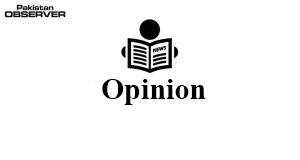Dr Hazirullah
PUBLIC Sector Universities are grappling with diminishing resources, largely because of significant decline in state funding in the current (2019-20) budget and poor management of resources. There is no doubt in accepting the fact that 2019-20 is an intensely challenging year for higher education in Pakistan. The Higher Education Commission (HEC) has advised the public sector universities to cut down their administrative expenses. It has also directed the universities to impose a ban on hiring non-teaching administrative staff and procurement of equipment (i.e., computer, machinery etc.) to deal with the budgetary cuts.
The Commission also recommended a “Fund-raising Programme” so that industrialists, alumni and other relevant people can donate funds. I think the notion of “Fund-raising Programme” in today Pakistan may be a nice thought for those in leadership positions, but I don’t think it is a realistic proposition. The decline in state funding to the public sector universities has come to a point where universities, I believe, are not able to manage the shortfall with fund raising from industrialists and alumni. Knowing the impossibility of fund raising from industrialists and alumni, universities have started to increase tuition fee, enrollment and teaching load while considering other ways to raise revenue.
It will not be a sweeping statement to argue that almost all public sector universities in the country are under increasing pressure to increase enrollment at BS, MS and PhD levels to meet their financial needs. For increasing the number of students, many universities have started BS morning, BS evening, MS/M. Phil Morning with thesis and MS/M. Phil evening without thesis. In addition to these initiatives, a number of public and private sector universities have started MS/MPhil on weekend. Increasing enrollment compels universities to relax their admissions criteria. Lowering admission requirements and standards to admit more and more students is no more than a compromise on the standard and quality education. Similarly, a considerable number of universities have also increased tuition fee from fall 2019 semester. Increasing tuition fee shows government attempt to make education a private good in the public sector universities. Increased tuition fee will shut the door of higher education to students from low and middle income families. Many universities have increased the faculty teaching load without bothering about its impact on the quality of teaching and learning.
It is important to remember that increasing students’ intake in universities beyond their capacities will lead to “institutional massification” and will result in a significant deterioration of quality. The authorities should not shut their eyes to the fact that increase in enrollment without a commensurate increase in qualified faculty is causing a deterioration in the quality of teaching and learning. Heavy teaching load also leaves no time for independent research and students’ guidance/supervision. The increased enrollment and teaching load seriously questions the very aim of higher education and quality teaching-leaning as majority of the qualified faculty members are heavily into administration tasks i.e., admission, coordination etc. Also, the proportion of staff with PhDs is low to supervise the number of MS and PhD students. In a nutshell, all these measures adopted by universities to meet their financial needs are increasing the strain on faculty and students. The increase in enrollment and teaching load places heavy burden on the teachers how to manage the quality in their teaching and fulfill their research missions.
I am cognizant to the fact that when you run a public sector university, you’re always struggling to do more with less. But we should understand that at a certain point, you don’t do more with less; you have to do less with less. I think we should keep the enrollment in line with the capacities of our universities. Do more with less will, in fact, further deteriorate the existing deteriorated standards of higher education. I think the authorities are not addressing the underlying problem but are trying to throw ash in public eyes. There is no doubt in accepting the fact that there has been an erosion of the public mission of higher education in this country. Universities have become divorced from their missions outlined by HEC.
The Higher Education Commission (HEC) of Pakistan, from the very inception of its up-gradation from University Grant Commission (UGC) to HEC in 2002, held, besides other aims, quality teaching and research as its priority agenda. HEC committed to initiating all kinds of steps guaranteeing quality education/research and realization of the concept of knowledge economy in true sense. I appeal to the Chairman Higher Education Commission to defend the real aim of higher education and communicate a strong message to the top political leadership of the country to fulfil their commitment regarding higher education in Pakistan. Similarly, the universities, instead of increasing enrollment, tuition fee and teaching load, should undertake a very extensive review of their existing operational processes and resources in their respective universities. They should look at such things as centralizing IT, being strategic in our sourcing, sharing service centres, changing the ways maintenance and purchasing are done in our universities.
—The writer is Associate Professor and Chairman Department of Sociology, International Islamic University Islamabad.










